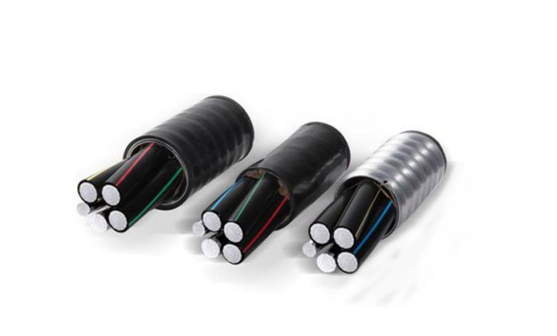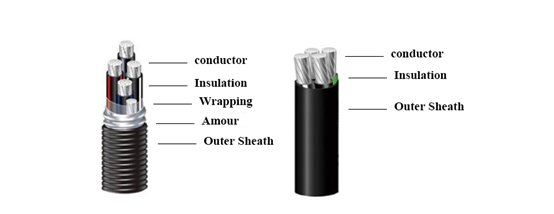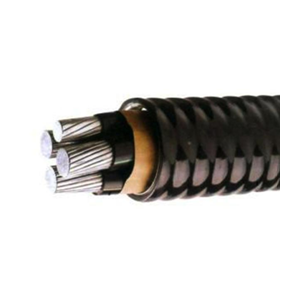The core value of the smart grid is to improve energy efficiency, use various high-tech means to improve the operation and management level of transmission, transmission, distribution and use of electricity, save resources and protect the environment; the smart grid is more adaptable to a variety of energy units for power generation, power distribution, The needs of electricity use are more adapted to the needs of market-based power trading and more suitable for customers' self-selection needs.
Vehicle to grid (VehicletoGrid, V2G for short) technology is the two-way interaction and exchange between the electric vehicle's energy under controlled conditions and the grid, is an important part of the "smart grid technology", the application of V2G and smart grid technology, electric The charge and discharge of the car battery is uniformly deployed. According to the established charge and discharge strategy, under the premise of satisfying the driving demand of the electric vehicle user, the surplus electric energy can be bi-directionally controlled and fed back to the grid.
1. The V2G system information flow V2G embodies the energy bidirectional, real-time, controllable, and flows between the vehicle and the grid. The charge and discharge control device has both the interaction with the grid and the interaction with the vehicle. The interaction includes the energy conversion information, Customer demand information, grid status, vehicle information, metering and billing information, etc. Therefore, V2G is a high-end integrated application of many technologies such as power electronics, communications, dispatch and metering, and demand-side management.
SM: smart meter, two-way metering, local information storage, communicating with RS485 and EV2PCS, and transmitting power information to UT through EV2PCS;
EV2PCS: Two-way smart charging and discharging device, which is composed of a low voltage controller and a local management machine. It is used to realize bidirectional energy interaction between the vehicle and the power grid. It is a key device of the V2G system.
UT: human-computer interaction terminal, which is the interface between the electric vehicle user and the electric grid, from which the user obtains electricity consumption and electricity fee information;
BMS: battery management system for vehicle battery data collection and transmission, battery status monitoring, CAN bus and EV2PCS communication, through the EV2PCS to the background of transmission of vehicle information;
EMS: Back-end management system, which communicates with the grid dispatch system, obtains grid load information and executes grid dispatch instructions, communicates with the EV2 PCS, obtains vehicle status information, and allocates and dispatches power grid dispatch instructions.
2. V2G System Components 2.1 Two-Way Intelligent Charge and Discharge Device Two-way intelligent control device As the key power component in V2G technology, it is used to realize two-way flow of energy between the power grid and electric vehicle. It can work in charging mode and V2G mode: if charging mode is selected That is, only the vehicle is charged, and the battery power of the vehicle is not fed back to the grid; if the V2G working mode is selected, the device is based on the upper and lower thresholds of the vehicle SOC selected by the user on the human-machine interaction terminal, or the default SOC upper and lower limits of the device. The threshold value provides the real-time capacity, controlled time and other information of the connected vehicle to the background management system. The background management system issues a charge and discharge control command. The device performs charging and discharging operations according to the current SOC of the vehicle battery to achieve energy. Bidirectional flow.
Its topological features are as follows:
(1) A three-phase full-bridge bidirectional PWM conversion is used to charge and discharge the battery;
(2) Grid communication and electric vehicle battery side use isolation transformers for electrical isolation;
(3) At the same time, the isolation transformer can perform voltage matching between AC and DC;
(4) Overcurrent and overcurrent breakers are configured on the AC side and DC side;
(5) The pre-charging circuit is configured on the AC and DC sides, and the starting mode is flexible;
(6) Using a first-order converter, the topology is simple and the reliability is high.
. 2 human-computer interaction terminal human-computer interaction terminal system structure is mainly composed of embedded controller, touch screen, radio frequency card reader, CAN communication card, remote monitoring communication expansion card, micro-printer and other parts. The main functions are: interface display, identification, EV2PCS control mode, ticket printing, data management and query, personalized parameter settings, language switching, and user operation help and abnormal information prompts.
2.3 Background Management System The background management system includes the charge and discharge strategy control subsystem and the energy management subsystem. The main function of the charge and discharge strategy control subsystem is based on the total capacity of the chargeable and discharged capacity provided by the energy management system, the electricity price, and the real-time load information of the current grid. The appropriate charging and discharging strategy algorithm is used to calculate the actual allowable charging or discharging capacity of the power grid, so as to dynamically realize the two-way energy exchange between the vehicle on-board battery pack and the grid; the main function of the energy management subsystem is to monitor the status of the on-board battery pack in real time and provide The basic data of the charge and discharge strategy is to provide secondary allocation instructions for charging or discharging capacity for each EV2 PCS.
2.4 Vehicle Battery Management System The Battery Management System (BMS) is the most comprehensive device for understanding vehicle battery performance and status. It establishes a connection between BMS and EV2 PCS, enabling the charging device to know the battery information in real time, changing its own execution strategy and input/output current. To ensure vehicle operation, battery safety, and extended service life. The main functions of the BMS include: real-time monitoring of the battery operating status; data acquisition, display, transmission of voltage, current, temperature, SOC, etc.; battery fault diagnosis, alarm, and safety protection; fault self-check and diagnosis; charge-discharge equalization; and vehicle control System and intelligent charge and discharge charging device two-way communication and so on.
2.5 Smart Meters As an important technical component of V2G applications, the smart meter functions as shown in Figure 4. The main functions include two-way metering, two-way communication, and event recording (recording the meter's phase loss, voltage loss, overvoltage, current loss, and current failure. Balanced, overpower, over-demand, over-voltage, open-cap, reverse-phase sequence, and other events, recording clock time, recording data clear, parameter settings, power meter power up and other events) and so on.
3. V2G Application Scenarios and Charge and Discharge Control Strategies 3.1 V2G Application Scenarios The future power development model is a transition to distributed generation and interactive power distributed decentralized smart grids, with more emphasis on the protection of the environment and the application of renewable energy generation, which requires the construction of more More efficient distributed energy storage facilities. Energy storage technology is one of the key technologies for realizing the smart grid. In January 2009, the Energy Advisory Committee of the US consulted on the report, using energy storage as a strategic tool for smart grid capacity management, which shows the significance of energy storage technology. As an existing distributed mobile energy storage unit, electric vehicles use long-term and successful management of vehicle charging and discharging through smart grid technology. V2G technology will be widely used in smart grids. Research shows that “in pace with the development of smart vehicles and smart grids, plug-in hybrid electric vehicles (PHEVs) and electric vehicles (EVs) will become an integral part of the distribution system itself within 20 years, providing energy storage, emergency power supply, And the stability of the power grid." The possible application modes and application scenarios of the envisaged V2G are:
(1) Residential Community (V2H, VehicletoHome);
(2) Office buildings (V2B, VehicletoBulding);
(3) Large-scale dedicated parking lot;
(4) supermarkets, hypermarkets or shopping malls;
(5) Government, school office buildings;
(6) Use clean energy to charge the vehicle.
3.2 V2G Charge and Discharge Control Strategy The premise of the two-way interaction between the electric vehicle and the grid energy as the mobile energy storage accessing grid is to ensure that the user's convenience is not affected. The current maximum driving range of pure electric small passenger vehicles is generally less than 200km, and the actual battery life is less than 1000 cycles, which is far lower than traditional fuel vehicles. Therefore, it is very important to adopt appropriate control strategies.
The strategy considerations involve the grid side, vehicle side, and user side. The grid side needs to consider real-time grid load, electricity price, and dispatch center instructions; the vehicle side needs to consider the battery energy status, input and output power, and available time; the user side mainly considers the user's Driving habits, mileage and special needs. Based on the basic data of charge and discharge capacity, grid load, and electricity price, appropriate charging and discharging strategy control algorithms are used to obtain the energy information required by the power grid within the jurisdiction and the energy information that can be provided by the vehicle battery to perform strategy allocation and issue dispatch instructions.
4. Concluding remarks Electric vehicles are the ultimate development direction of the automotive industry. Smart grids are an inevitable trend of economic and technological development. The combination of electric vehicles and smart grid V2G not only solves the problem of charging pressure brought about by the large-scale development of electric vehicles, but also can As a mobile, distributed energy storage unit, the electric vehicle is connected to the power grid for peaking and filling valleys, emergency security, and rotating backups, which can delay grid construction investment while improving grid power supply flexibility, reliability, and energy utilization efficiency. The Shanghai Electric Power Company's Technology and Development Center is the first organization to conduct V2G technology research in China. It has mastered a large number of V2G related technology research and development trends, and has established extensive cooperative relations with domestic and foreign scientific research institutions and enterprises, and has initiated pilot projects for V2G applications. demonstration. At present, the research and application of V2G is still in its infancy. Its development is closely related to the development of related technologies such as electric vehicles, energy storage and distributed power supply.
Rare Earth Aluminum Alloy Power Cable is kind of cable, in which the rare earth high iron aluminum alloy is used as conductor, flame-retardant organosilane cross-linked polyethylene is used as insulation and the self-locking armored structure is installed, has completely independent intellectual property rights and removed the defects of aluminum cable systematically. The environment-oriented insulation materials with low smoke, free halogen and being fire-retardant have greatly reduced risk of being on fire. This cable can installed in moist environment. The cables boasts large current carrying capacity and convenient and low cost installation and maintenance.
Standard: GA306 Jacket: PVC
Conductor: aluminum alloy Cores: single core or multicore
Insulation: XLPE/PVC Rated voltage: 0.6/1KV

Advantages:
- Conductor fatigue resistance
- Creep resistance
- Impact resistance
- Easy to bend
- Corrosion resistance
- Light weight
- Easy installation
- Long life span
- Flame retardant
- Fire resistant
- Zero halogen & low smoke
- Excellent flexibility
- Corrosion & abrasion resistant
- Decent mechanical strength
- Chemical & acid resistance
- Excellent elasticity and stickiness
- Superior economic performance
- ...

Application:
- Lighting
- Public amenities such as theatres, cinemas
- High rising buildings
- Public buildings such as libraries, museum, schools and hospitals
- Family residence
- Household appliances
- Electrical equipment
- Power console
- Automotive industry
- Government buildings
- Power transmission and distribution lines
- And many more...

Welcome to visit our factory to learn more about us. If you have any questions, please feel free to contact us.
Rare Earth Aluminum Alloy Cable
Rare Earth Aluminum Alloy Cable,Aluminum Alloy Electric Cable,Rare Earth Aluminum Alloy Power Cable,Aluminum Alloy Armoured Cable
Fujian Lien Technology Co.,Ltd , http://www.liencable.com